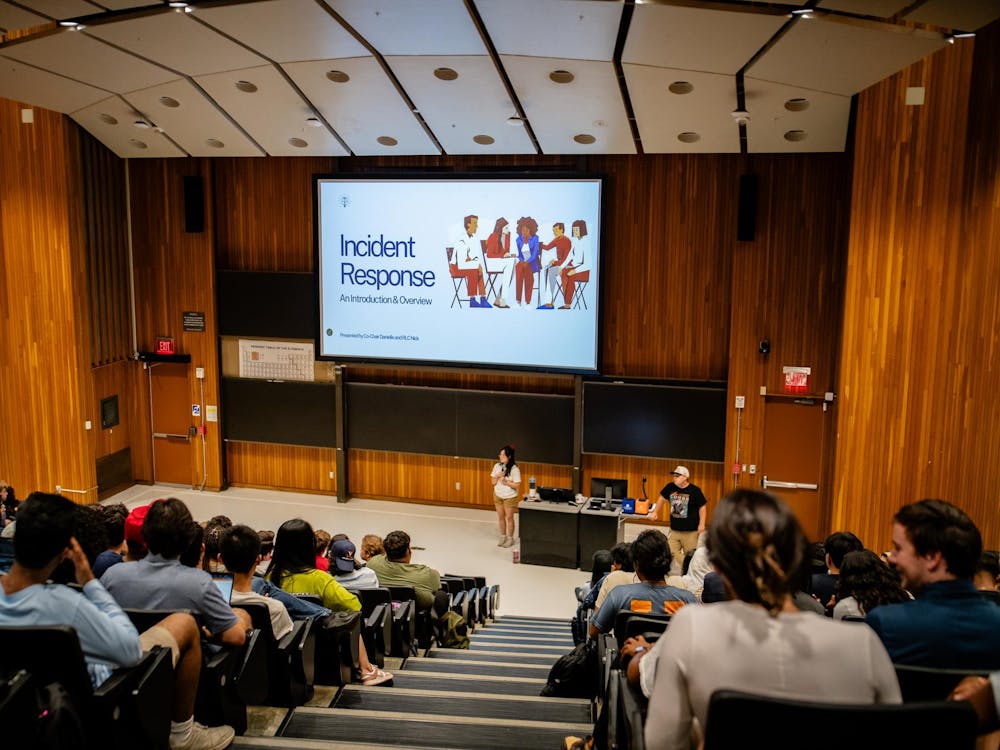During the past seven months, the University community was struck with several tragedies involving the deaths of college students in the Charlottesville area. Graduate Arts & Sciences student Matthew Steven King was killed April 19 in a cycling accident off Grounds. Earlier this month, fourth-year College student Joseph Luke Arwood passed away at the University Medical Center after being found unconscious one morning at the Sigma Phi Society fraternity house. And Oct. 17 of last year, Virginia Tech student Morgan Dana Harrington went missing after attending a Metallica concert at John Paul Jones Arena. In January, Harrington's remains were discovered on a remote farm southeast of Charlottesville.
Although the circumstances surrounding the deaths of Harrington and Arwood are quite dissimilar, some members of the local community have expressed frustration at the relatively slow trickle of information that has become available about both cases. At least a few people have accused the University of withholding information.
University spokesperson Carol Wood explained that administrators generally follow a specific course of action when responding to any kind of death or serious incident involving the University. "We always start off with a narrower focus, offering assistance to the victim's family and close friends," Wood said. "Once we have provided as much support as possible for the individuals most affected, we shift our focus to addressing the greater community."
Of course, in both the Harrington and Arwood cases, relatively little new information has been provided by University officials - most news disseminated by the University offers updates provided by the Virginia State Police. There are a few compelling reasons for this kind of approach. "With respect to Ms. Harrington, that remains an open police investigation and we would do nothing that might compromise or hinder that investigation," Dean of Students Allen Groves said in an e-mail. He also pointed out that regarding Arwood, no cause of death has been officially released. "Once one is determined, it would be shared with the family and not the University, making further comment from us unlikely."
The cause and manner of an individual's death, however, is publicly available information. The cause of Arwood's death has yet to be determined by state medical examiners, but once the news is released, a response from the University may be warranted. "Depending on the complexity of the case, [the necessary] testing could take up to six months or longer to complete but on average, for the majority of the cases, it usually takes anywhere from 8 to 12 weeks," according to an e-mail from Steve Murman, central district administrator for the Virginia Office of the Chief Medical Examiner.
Although University officials are correct to prioritize privacy for the families of students involved in tragic events, certain cases call for more open communication. Regardless of the circumstances, when a student is found unconscious in a fraternity house and later passes away, that is a tragedy of great significance to the larger University community. To ignore this opportunity for education, particularly if it could prevent similar deaths in the future, would be a disservice to the deceased.
More generally speaking, Groves pointed out that University-wide responses to student deaths are only made under certain circumstances. Family members and students directly affected by the tragedy are contacted first, and from there, the University is likely "to otherwise comment publicly and more broadly only where there may be a specifically identified safety concern that is applicable to the wider student body and faculty/staff community," Groves said. Patricia Lampkin, vice president and chief student affairs officer, reiterated this point, saying she only sends an e-mail to students if there exists an imminent threat to safety or if there is an event in which police are involved and need to communicate with the student body.
Naturally, there often are convincing reasons to keep certain information private. Nevertheless, even if responding to specific rumors about a case is unwise, University administrators must acknowledge that the more transparent they are with the decision-making processes involved, the more their actions will be perceived as credible.
There also are certain symbolic steps that can help the University demonstrate its dedication to openness and accountability. For example, in a Jan. 27 University press release about the discovery of Harrington's remains in Albemarle County, Virginia Tech President Charles Steger is quoted from an open letter he wrote following confirmation of Harrington's death. Although Leonard Sandridge, the University's vice president and chief operating officer, offered his condolences, President John T. Casteen, III's name does not appear in the news release.
In January, Casteen sent a University-wide e-mail about the death of Batten School student Stephanie Jean-Charles following the devastating earthquake in Haiti; late last week, the president issued an open letter to students about an incident of racial intolerance on the Corner. Both are examples of how well-timed, straightforward responses from Casteen can clarify the University's position on certain issues and help assuage student concerns. But he appears not to have addressed the University community as a whole about the Harrington incident, through e-mail or other means. Given that the disappearance garnered national attention and elevated concerns about safety in the Charlottesville area, the silence from Carr's Hill has been regrettable.






